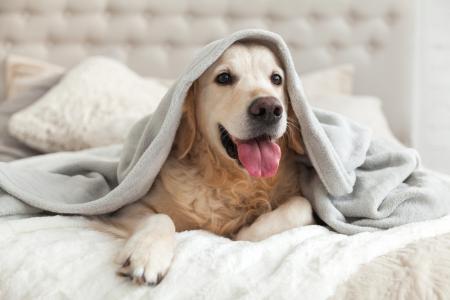
Loving Your Home and Your Dog
Many homebuyers love dogs but don’t always love the results of having a dog (or two) in the house. Here are a few ways to reduce the downsides of pet ownership while enjoying all the perks.
Before Owning a Dog
If you haven’t already welcomed a dog into your home, it’s a good idea to select a breed that works with your lifestyle and doesn’t produce excessive home maintenance chores. Here are a few things to consider:
Shedding. Some breeds shed like crazy, while others don’t shed at all. The Great Pyrenees, the Alaskan Malamute, and Siberian Huskies, for example, are known for massive amounts of hair loss, whereas many terriers, poodles, schnauzers, and select other breeds are considered “hypoallergenic” because they shed so little.
Trainability. Some breeds are naturally harder to train than others. Everything from keeping them off furniture to housebreaking may be more challenging. Take time to research a breed’s exercise requirements and breed-specific training recommendations. Mastering a few critical skills, like no-tug leash walking, can make it easier to teach dogs good house manners.
Size. Larger dogs have more hair and will shed more. Larger dogs will also smell stronger than smaller breeds unless they’re regularly bathed and groomed. “Accidents” by large dogs will be a bigger (and smellier) mess.
Maintenance requirements. Some of the “no shed” breeds require more time and energy for proper grooming than it would take to vacuum a couple of extra times a week. If you’re not willing to tackle this yourself, are you ready to pay for grooming services?
Color compatibility. If you wear a lot of black garments, or if your furniture or floors are dark, then a high-shedding white dog may not be your best choice. Ditto for dark dogs if your house and wardrobe are primarily light.
In Your Home
Once a dog has joined your household, there are several additional steps you can take to reduce the negative impacts of pet ownership:
Grooming. Regular bathing, brushing, and trimming your dog’s coat makes a huge difference in how much hair lands on your furniture and floors. It’s much easier to pull dog hair out of a brush than to attempt to remove it from every surface in your home. Good grooming habits also reduce household pet odors.
Training. Both humans and their dogs need to develop good habits to maintain a clean house. Keep dogs off couches and chairs to reduce the volume of hair on your furniture—and your clothing. Entrance rugs, plus an extra towel or rag, can help wipe your dog’s feet and prevent dirty or muddy paw prints throughout the house.
Furniture. It’s a good idea to select dog-friendly furniture, even if you don’t allow Fido up on the couch. Leather and wipe-clean surfaces minimize maintenance chores. When you have pets, thicker upholstery and various patterns hold up better than delicate silks and hair-attracting velvets.
Flooring. When accidents happen, hard surfaces are easier to clean than carpeting and rugs. Hardwood flooring, ceramic tile, etc. are also less likely to trap unpleasant pet odors.
Nutrition. High-quality food and omega-3 supplements will help prevent nutrition-based shedding. Dogs who don’t receive proper nutrition will shed more profusely.
Medical care. If your dog is shedding massive amounts of hair or has bald spots, they may be suffering from allergies, skin infections, or a more serious medical condition, like cancer. Medications and treatments for some of these conditions can reduce shedding.
Home Sweet Home
There are few things as loving and sweet as your favorite fur baby. Taking a few extra steps to make cohabitation less stressful will improve everyone’s quality of life.
